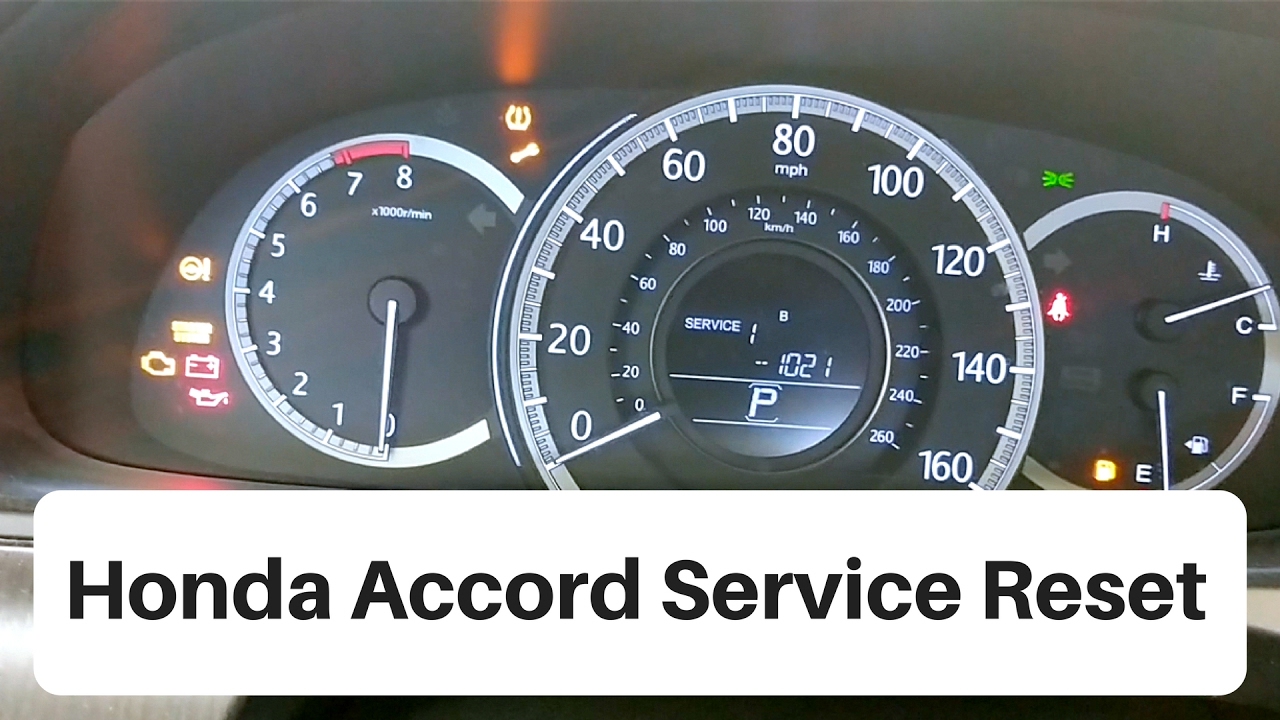How To Reset Engine Light On Honda Accord

The dreaded Check Engine Light (CEL), also known as the Malfunction Indicator Lamp (MIL), is a familiar sight for many Honda Accord owners. It's a signal from your car's onboard diagnostic system (OBD II) that something isn't quite right. While it can be a minor issue, like a loose gas cap, it can also indicate a more serious problem requiring immediate attention. Ignoring the CEL is never a good idea, but understanding how to potentially reset it – and more importantly, why it came on in the first place – is crucial for responsible car ownership.
Understanding the Check Engine Light
The CEL is your Accord's way of communicating potential issues. The OBD II system monitors various sensors and systems within your car, including the engine, transmission, emissions control, and more. When a sensor detects a reading outside of its pre-defined parameters, it triggers a diagnostic trouble code (DTC) and illuminates the CEL. These DTCs are standardized across the automotive industry, allowing mechanics to quickly pinpoint the area of concern. Common causes for a CEL on a Honda Accord include:
- Loose Gas Cap: The most common and easiest fix!
- Faulty Oxygen Sensor: Responsible for monitoring exhaust gas composition.
- Catalytic Converter Issues: A critical component in reducing harmful emissions.
- Mass Airflow Sensor (MAF) Problems: Measures the amount of air entering the engine.
- Spark Plug or Ignition Coil Problems: Can cause misfires and reduced fuel economy.
- Vacuum Leaks: Disrupt the air-fuel mixture.
Methods to Reset the Check Engine Light
It's important to emphasize that simply resetting the CEL without addressing the underlying issue is only a temporary fix. The light will likely return if the problem persists. However, understanding the reset process can be helpful for troubleshooting or verifying a repair. Here are several methods:
1. Using an OBD II Scanner
This is the most reliable and recommended method. OBD II scanners are readily available online or at auto parts stores, ranging from basic code readers to more advanced diagnostic tools. Here's how to use one:
- Plug the scanner into the OBD II port, usually located under the dashboard on the driver's side.
- Turn the ignition key to the "ON" position (without starting the engine).
- The scanner will power up and establish a connection with your Accord's computer.
- Follow the scanner's prompts to read the DTC(s). Note down the codes for future reference.
- Most scanners have an option to "Clear Codes" or "Reset MIL." Select this option.
- Turn off the ignition and disconnect the scanner.
- Start your Accord and see if the CEL remains off.
Consider scanners from brands like Autel, Innova, or BlueDriver, which are popular among enthusiasts and professionals alike.
2. Disconnecting the Battery
This is a less precise method and may not always work, especially on newer Accords with more sophisticated electronics. Disconnecting the battery essentially resets the car's computer, clearing the DTCs and the CEL. Caution: Disconnecting the battery can also erase other stored settings, such as radio presets and seat memory positions.
- Locate the battery in your Accord's engine bay.
- Use a wrench to loosen the nut on the negative (-) battery terminal.
- Carefully disconnect the negative terminal.
- Wait for approximately 15-30 minutes. This allows the car's computer to completely discharge.
- Reconnect the negative terminal and tighten the nut.
- Start your Accord and see if the CEL remains off.
3. The "Turn Key On/Off" Method (Less Reliable)
This method is often mentioned but has inconsistent results and is not officially recommended by Honda. It involves a specific sequence of turning the ignition key on and off, but its effectiveness is questionable.
After Resetting the Light
After resetting the CEL, it's crucial to monitor your Accord for any recurring symptoms. If the light returns quickly, or if you experience driveability issues, seek professional diagnosis from a qualified mechanic. Ignoring the CEL can lead to more serious and costly repairs down the line. Remember that a lit CEL often signals a problem that affects fuel economy, emissions, and overall engine health. Regular maintenance, including oil changes, spark plug replacement, and air filter replacements, can help prevent many common issues that trigger the CEL.
Understanding your Honda Accord's OBD II system and the meaning behind the Check Engine Light can empower you to make informed decisions about your car's maintenance and repair. While resetting the light can be a temporary solution, addressing the root cause of the problem is always the best course of action.
